Suresh and his power are gone. We have come out of the Chandra River Valley and climbed up and over and into the Spiti Valley…known to locals simply as the ‘Piti’ Valley or ‘Middle Land’. As significant Suresh’s powers are, he has gone home and his responsibilities have gone to Dharma, who seems to thrive in his role as leader almost surprisingly. The Spiti Valley is the home to Dharma and his ancestors, where his native tongue and knowledge can come to the fore. He is awkward about this newfound power but is humble wrapped in its cape.
The Chandra Valley and its outrageously beautiful silences of stone and wind have given way to villages and green life. Mortals – beyond our team – have made their way into our lives as well and Tibetan, Balti, Dard and other features have come together just have the confluence of rivers and valleys. It is a sumptuous place of reckless beauty and DNA and we lap it up in big heaving breaths.
Our porter team too has left to go back to Manali to pick apples. Their season for carrying in the high mountains is shortly coming to an end, and they will head back to Nepal to rest for the winter months.
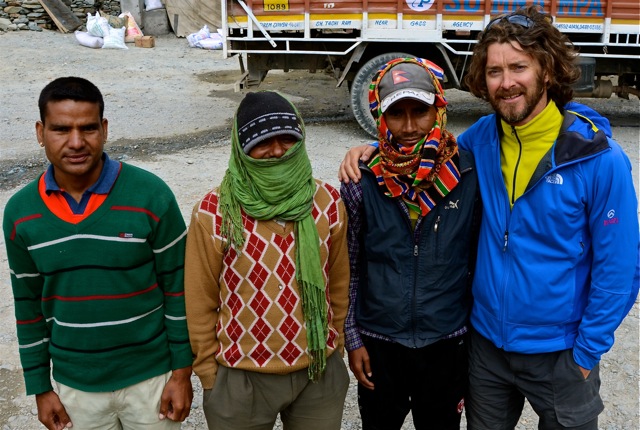
Porter Power. Left to Right: “Shoulders”, “Leader”, and my man “Mountain”…and myself. Honoured to have had a fearsome team in the mountains
First order of business for us is sorting out permits. If travel were only so simple as to dream a little, pack a bag and see what happens! The tiny colouful village of Losar with its tea shop, police station and celebration of a newborn plays out in front of us within minutes of arriving in a change from stoic mountain scenes to something frenetic and alive.
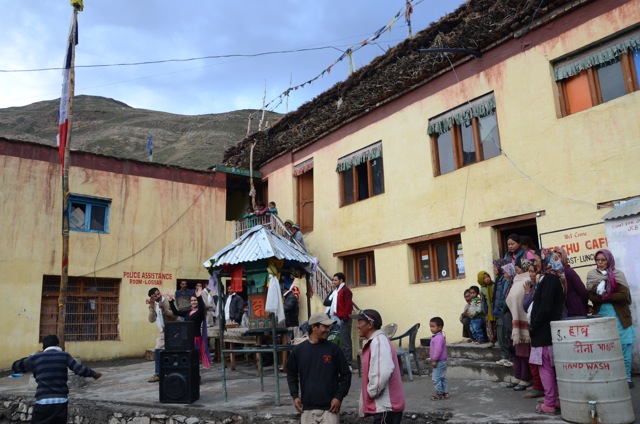
We enter the Spiti Valley. Here, the wonderful little town of Losar…where everything is happening at once
We are back amidst moving life. Within two minutes of ordering tea, relatives of Dharma’s sit across from us and start up chatting. In a town of a few dozen homes word gets out and Dharma’s presence brings joy. Dharma glows…he is home! His sharp handsome features have become somehow boyish. Spiti and nearby Kinnaur have always literally and figuratively rested in the shadows of the more well known Ladakh to the north but trade and traders buzzed here too. Quiet valleys that themselves needed supplies and luxuries sent their own teams north, west, and east.
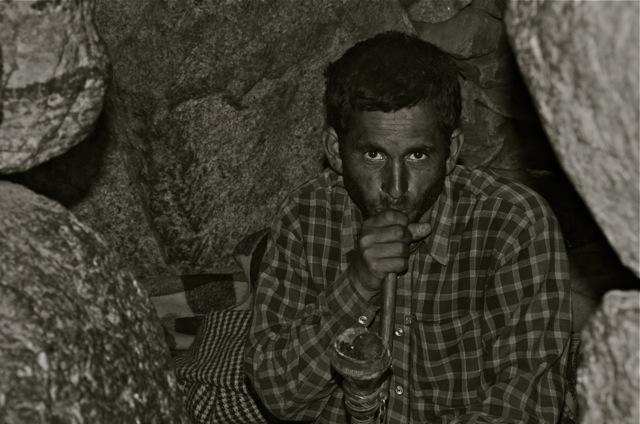
Habits die hard for shepherds who’ve no one to love but their herds. Here an old fashioned hooka…one that is used
The Spiti Valley is a departure point for us to head north by caravan to the great lake in the sky, Tso Moriri. Trade items made their way into and out of Spiti via the 5,500 metre Parang Pass. Throughout the lands of trade and amidst the traders, Parang was renowned for being both a brutal test of will and a thing of almost schizophrenic moods. Blizzards, gaping blue skies, winds that peeled skin off, and all sorts of tales were told of the big pass. Michael and I are like pointers with our noses pointed northwards at the pass waiting to leave. Passes for me have long been as wondrous and sacred as summits as they were the vital conduits to other worlds.
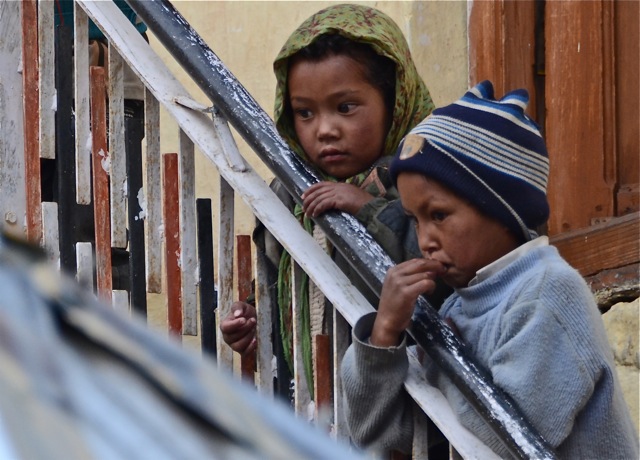
One of those moments that stops all things…a face that melts all in its path. A little Tibetan girl listens to a live music performance
Kaza, the ‘capital’, however unofficial, is a dusty hub with generators running most hours of the day, though the centre of town has living beating hub, where greetings are sprayed everywhere by everyone.
The language of choice is a mixed range that Dharma simply calls ‘Spiti language’ or ‘Buddhist language’ which takes and extracts from Tibetan, Ladakhi, Hindi, and some other tongues thrown in. Trade had much to do with shaping this portion of geography and in some ways trade and its delivery of culture, news, and goods shaped all of the cultural Himalayas, which lay in valleys or upon plateaus. It is this essence that I’ve come for: to trace these cultural routes, which just happen to pass through some of the planet’s most grueling and thrilling geography. Spiti Valley and Tibet have traditionally had much contact with trade, migrants, and travelers finding the journeys east and west simple and comforting. Much Tibetan influence remains though the nearby borders are still rife with tension as China and India continue a long tradition of agreeing to disagree.
It is here in Spiti too that we meet our latest ‘lead guide’. Following Suresh’s almost flamboyant displays of leadership, this latest guide who I’ve heard much about, seems almost meek. Tashi’s parents were traders as were his grandparents and his small round body belie fierce strength and resolve, but at first this isn’t at all evident. His monotone is steady and he takes time to answer questions, which is rare.
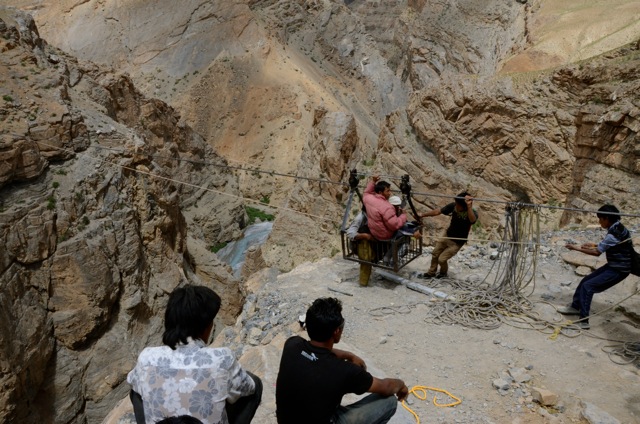
A fun ride zip-lining 110 metres above a river gorge. We needed to cross to meet and interview an old trader.
He is considered and eloquent and doesn’t mind imparting news that isn’t to our liking. One other thing he has going for him is the obvious affection that Karma, my resident and very unofficial life councilor, seems to have for him. They sit for hours chatting over tea and even Kaku’s handsome wide-boned features soften.
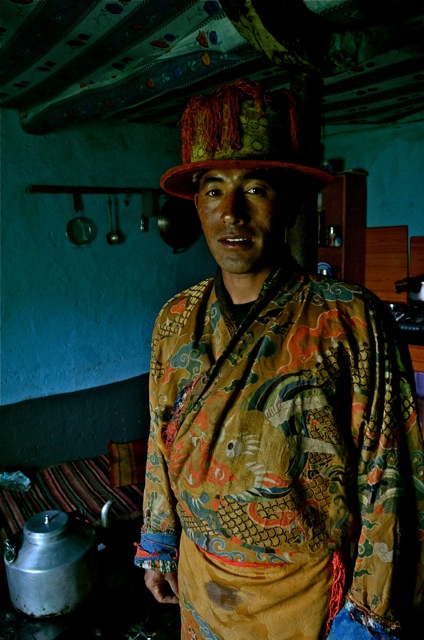
A local of the Spiti Valley in full costume that was passed down from his parents’ parents. Versace, take warning….
The land we’re heading into is the land of the sheep, the goat, and the snow leopard. The snow leopards are remaining with us (at least in the mind), as the regions we are travelling through are theirs. They are seen as only half of this world by locals…private drifters with potent enough power to kill anything cleanly. Phantoms of refined, rapid, and exquisite skills, they are described with a kind of reverence and agitation that only truly special beings are. There are times when I wonder if they’re not far above us in the crags at times measuring our passing down below their perches.
However, leopards aside, we are about to meet another kind of refined being shortly, though we have no warning of his coming into our lives…Sadanand will hobble (as he limps with some long ago sustained injury or miserable twist of fate) into our specter as a short, lined, and callused man of 65 who literally has the look of indestructible leather about him. He is our horseman for the coming section and his aura will loom large for the remainder of the trip and I suspect way beyond. What, after all, is an epic trip, without epic characters?

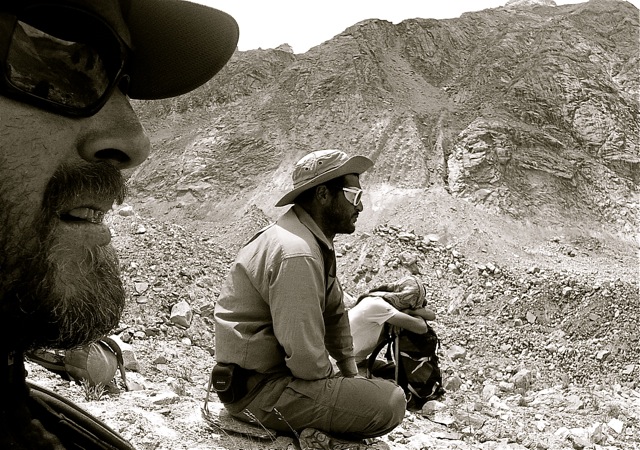

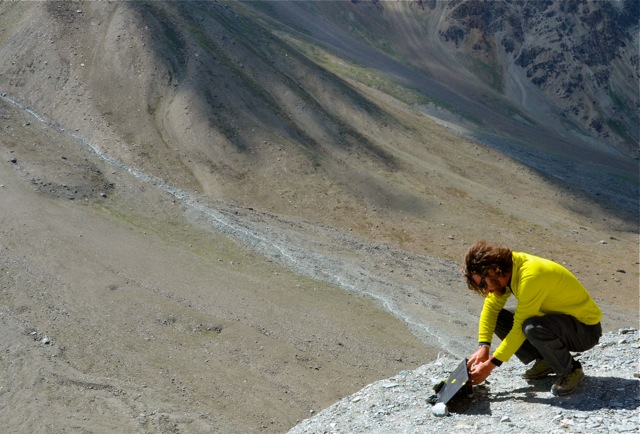
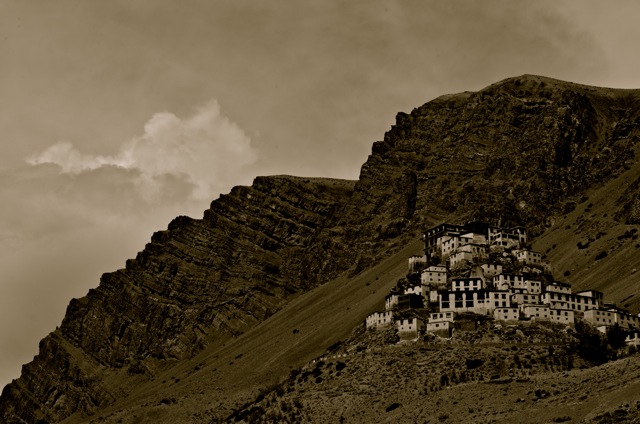
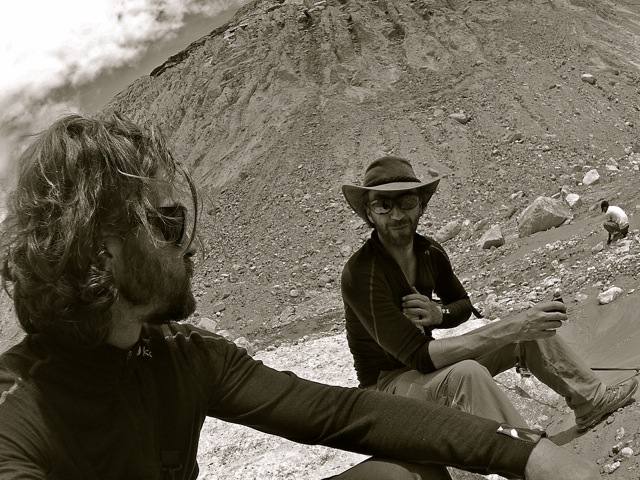
What kind of tea do they drink? Chai or simply black, or black milk sugar tea?
Here it is usually simply a black tea, or one of their wondrous ‘chai’s’ with spices, cloves, milk and sugar. We are knee deep in it as a kind of distraction from the huge amounts of green Puerh we’ve got with us.